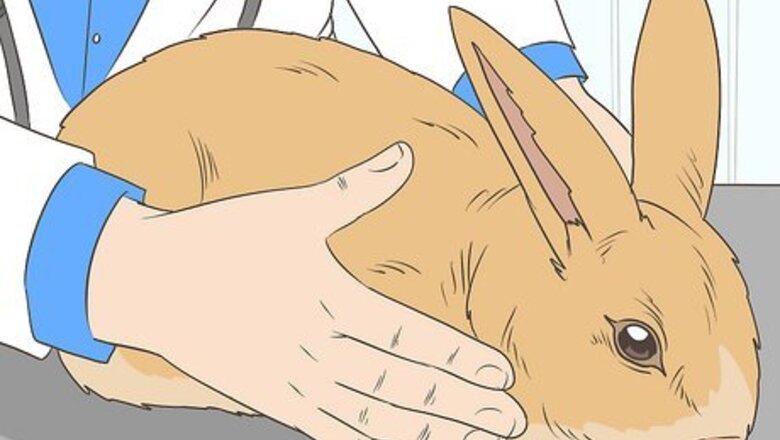
views
X
Research source
Treatment for snuffles involves antibiotics, and possibly other treatment methods, to get rid of the bacteria. If your vet diagnosed your rabbit with snuffles, begin treatment early so your rabbit has the best chance of getting better.
Treating with Antibiotics

Take your rabbit to your vet. Symptoms of snuffles include runny eyes and runny nose. The fur on the front paws is usually matted and crusty from a rabbit using its paws to wipe the discharge from its eyes and nose. Sneezing is another symptom of snuffles. If your rabbit has any of these symptoms, take it to your vet for diagnosis and treatment.
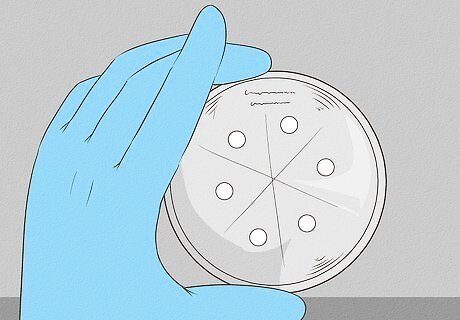
Have your vet select the right antibiotic. Many antibiotics are available to treat bacterial diseases. To determine which antibiotic to prescribe, your vet will take a sample of discharge from your rabbit and perform what’s called a culture and sensitivity test. This test will indicate which bacteria is causing your rabbit's snuffles and which antibiotic will be most effective against that bacteria. Some antibiotics can cause serious gastrointestinal (GI) problems in rabbits. Your vet will select the antibiotic that is not only effective, but also least likely to cause GI problems in your rabbit. Be aware that no antibiotic is a definite cure for snuffles. The culture and sensitivity test may take several days to perform.
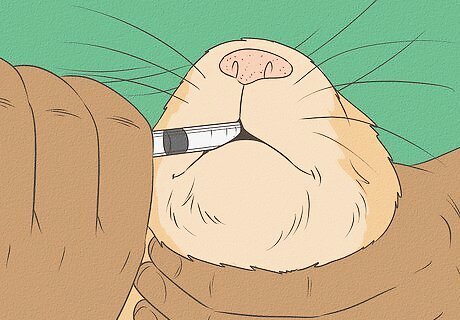
Administer the antibiotic. To treat snuffles, your vet will prescribe oral antibiotics, which will be in liquid form and given using a syringe. To make things easier, ask your vet to pre-fill syringes with the correct amount of antibiotic (per dose). To administer the oral antibiotics, hold your rabbit snugly. Place the syringe in the corner of your rabbit’s mouth and gently empty the syringe’s contents into the mouth. Your vet may also prescribe antibiotic eye drops if your rabbit has conjunctivitis (inflammation of the eye's inner lining). To give the eye drops, hold your rabbit and slowly drop the prescribed number of drops onto your rabbit’s affected eye. Antibiotic treatment for snuffles can take anywhere from a few weeks to a few months, especially if your rabbit’s snuffles is chronic. Give your rabbit the entire course of antibiotics, even if your rabbit starts getting better. If you stop the treatment early, the remaining bacteria in your rabbit’s system could become resistant to antibiotics. If you are not sure how to give the antibiotics, ask your vet to show you how.
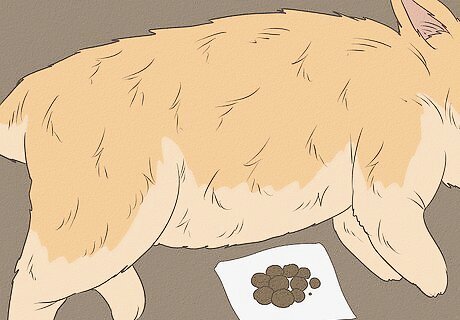
Monitor your rabbit for GI problems. Your rabbit’s GI system contains ‘good’ bacteria that help with food digestion. Antibiotics can suppress the good bacteria and allow ‘bad’ bacteria to multiply in your rabbit’s gut. These bad bacteria can release toxins that could make your rabbit extremely sick. Signs of GI problems in your rabbit include a reduction in fecal pellets and a doughy-feeling stomach (due to gas buildup). If your rabbit is having GI problems with antibiotic treatment, contact your vet right away. Your vet will need to put your rabbit on a different antibiotic. Probiotics are products that contain healthy digestive bacteria. Talk with your vet about giving your rabbit probiotics to restore the population of good bacteria in your rabbit’s GI system.

Watch for signs of improvement. With antibiotic treatment, your rabbit should start feeling better. The nose and eye discharge should stop, as well as the sneezing. However, the improvement may be only temporary—your rabbit may get sick again after antibiotic treatment stops. If your rabbit’s symptoms come back, it may have chronic snuffles. Take your rabbit to your vet if the symptoms return.
Using Other Treatment Options
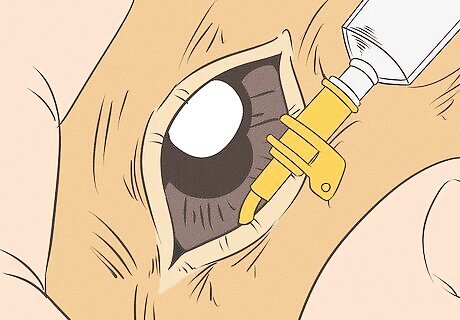
Have your vet flush your rabbit’s tear ducts. Rabbits have tear ducts that allow tears to flow from the eyes and into the nasal cavity. With snuffles, these tear ducts can become blocked with pus and bacteria. If your rabbit’s tear ducts are blocked, your vet will want to flush them with a clear saline solution. Your rabbit may need to be sedated for your vet to do the flushing. During the flushing, your vet will take care not to damage the ducts.
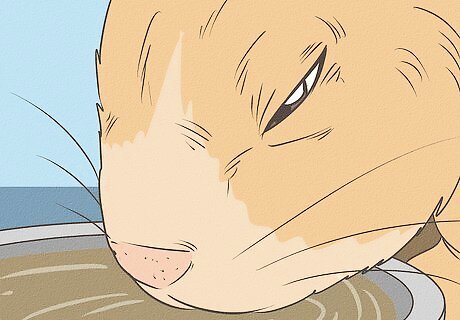
Make a chamomile tea. Chamomile tea for your rabbit will help him/her to breathe better and also has a calming effect. Brew it stronger than you would drink it, and add a teaspoon of honey. Consider purchasing some Echinacea drops (all natural-some contain goldenseal which is safe for your rabbit) to add to the tea. Add two drops in aprox. half a cup of tea. Echinacea helps with stuffy noses. While many rabbits respond best to antibiotics that a vet prescribes, others respond very well to echinacea drops.
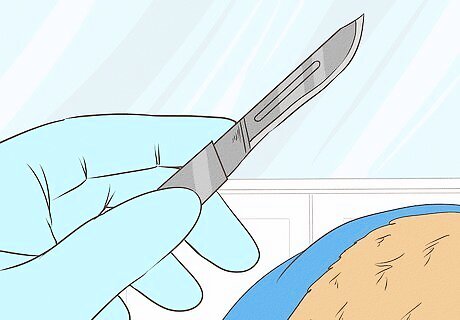
Allow your vet to perform surgery. When a rabbit has snuffles, the body may try to ‘wall off’ the infection by forming abscesses (pockets of infection). These abscesses can form in different parts of a rabbit’s body. Removing the abscesses requires surgery, since the material in the abscesses is too thick to be drained. Below are a few things to keep in mind about surgical abscess removal: Abscesses found with chronic snuffle cases are difficult to remove, since they’ve had time to become extensive within the body. The tissue around the abscess may be dead or dying. Therefore, your vet may need to remove more than just the abscess. Surgery is only appropriate when the abscesses form on the outside of the body. If lung abscesses form, then surgery most likely won't be successful. Your rabbit may need multiple surgeries for all of the abscesses to be removed. After surgery, you will need to care for the wound at home. At-home care includes keeping the wound clean and monitoring the incision site for infection (swelling, green or yellow discharge).
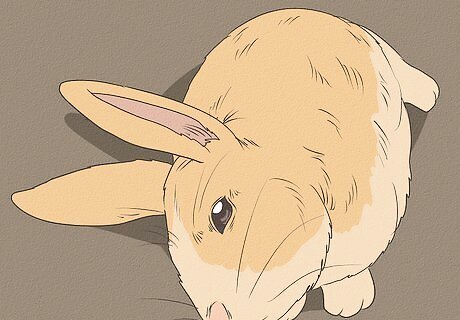
Treat your rabbit’s neurologic symptoms. Sometimes, snuffles can affect the central nervous system (brain and spinal cord) in rabbits. This can cause neurologic problems, such as Wry Neck and rapid, uncontrolled pupil movement. If your rabbit has neurologic problems, your vet will prescribe medication to treat those problems.
Keeping Your Rabbit Comfortable During Treatment
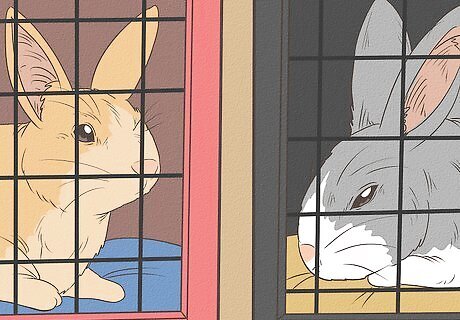
Put your rabbit in a separate cage. Snuffles is a very contagious disease in rabbits. If your rabbit has snuffles, keep it in a separate cage until it has completed treatment. Without other rabbits in the cage, your sick rabbit will likely feel a little more comfortable.
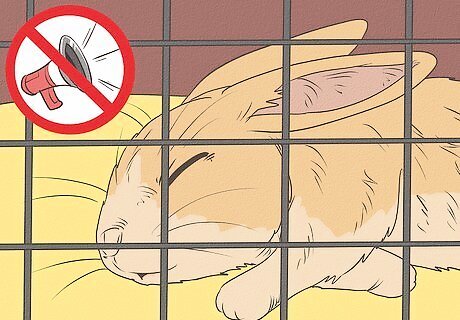
Place your rabbit’s cage in a quiet area. Snuffles can make a rabbit feel pretty lousy. Your sick rabbit will want some peace and quiet as it recovers from its illness. Put your rabbit’s cage away from areas with loud noises (television, radio) or a lot of human activity. Don’t put the cage too far away, though—it should be where you can easily keep an eye on your rabbit.

Keep the cage away from drafts. A constant draft of air in your rabbit’s cage could make your rabbit feel even worse than it already does. Within that quiet area, make sure the cage is not in the direct path of drafts, such as air vents in the floor or ceiling.
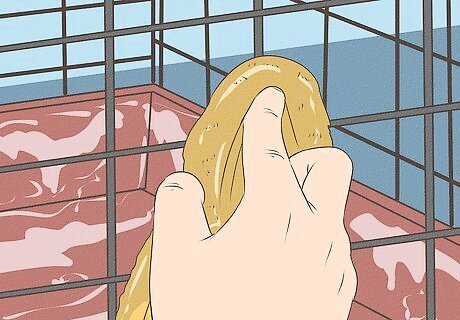
Clean your rabbit’s cage. A clean cage will help your rabbit feel more comfortable as it recovers from snuffles. Following a cleaning schedule will ensure that your rabbit’s cage stays clean. Daily cleaning duties include removing any uneaten food, washing food and water bowls in hot and soapy water, and removing urine and feces. About every two weeks, do a deep clean of your rabbit’s cage. This includes disinfecting the cage and litter box, washing the bedding, and disinfecting toys. Remove your rabbit from the cage before you start cleaning. You can put your rabbit in a separate cage.




















Comments
0 comment